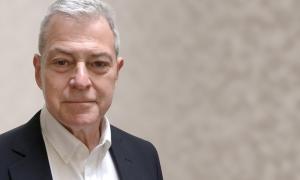Military Rivalry Fueled Nuclear Program
Leonard Hyman is an economist and financial analyst specializing in the energy and regulated sectors. He was formerly head of utility equity research at Merrill Lynch, and senior advisor to investment banking at Salomon Smith Barney. At one point, he was on a NASA panel investigating the placement of nuclear power plants on the moon. He is author of America’s Electric Utilities: Past, Present and Future. William Tilles is a senior industry advisor and speaker on energy and finance. He worked as a bond analyst and later headed equity utility research at Dean Witter Reynolds and then Smith Barney. He then became a portfolio manager at Angelo, Gordon & Co. and later at Sandell Asset Management. For a time he ran the largest long/short equity book in the world.
The civilian nuclear power industry in the U.S. began as a direct offshoot of military ordnance research during World War II. In 1953, President Eisenhower launched his Atoms for Peace program, reorienting nuclear research to electricity generation.

The first commercial nuclear power station in the country, located in Shippingport, Pennsylvania, was a small reactor. It was similar in design to that deployed in the USS Nautilus, the first nuclear-powered submarine.
Hyman Rickover, the father of the nuclear Navy, favored a pressured water reactor using solid uranium-based fuel, with water used in the reactor as both coolant and moderator of the chain reaction. That was the design at Shippingport.
Two other features of the early design favored its adoption. First, it was technologically ready for deployment. At the height of the Cold War, the propaganda value of being first to launch a nuclear-powered vessel was enormous.
Second, this type of reactor generated a sizable plutonium byproduct. The U.S. military at the time was concerned about a plutonium shortage. They needed it for the nuclear warheads on the fleet of inter-continental ballistic missiles under development.

